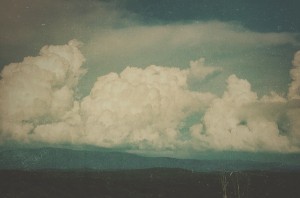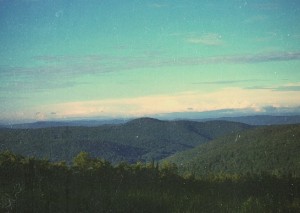Position, Measurement and Observation (Part 4)
By Asher Crispe: October 16, 2013: Category Inspirations, Quilt of Translations
Prologue to a Theory of Law
 Our reflections on positionality, measurement and observation have renegotiated how we regard objects in the world. In continuing to develop a critical consciousness of these processes, we can now turn to a description of how they affect ‘standard’ topologies. We often assume that everything we encounter in external reality is resting comfortably in its place. Sensory data lends itself to reinforcing this conviction. The features of our mental map may (at first) appear inert. Yet, a 4D representation–like a time elapsed video–reveals the hitherto unperceived shifts and transmutations. Better still would be a 5D representation where the observer is depicted in and amongst the observations. With each of these new dimensions thrown into the mix, the earthquakes intensify within the model we our fashioning.
Our reflections on positionality, measurement and observation have renegotiated how we regard objects in the world. In continuing to develop a critical consciousness of these processes, we can now turn to a description of how they affect ‘standard’ topologies. We often assume that everything we encounter in external reality is resting comfortably in its place. Sensory data lends itself to reinforcing this conviction. The features of our mental map may (at first) appear inert. Yet, a 4D representation–like a time elapsed video–reveals the hitherto unperceived shifts and transmutations. Better still would be a 5D representation where the observer is depicted in and amongst the observations. With each of these new dimensions thrown into the mix, the earthquakes intensify within the model we our fashioning.
Thus, we can begin to make sense of the next phrase of our quotation from Habakkuk 3:6 “And the everlasting mountains were shattered; the eternal hills were humbled…” as a trope for redistributed topoi in general. Featureless land is flat. There is nothing to differentiate one place from another (geometrically). Only with the erection of mountains and the spacing of valleys can a region take on distinctive character. In Chassidic thought mountains have been catalogued as zones of differentiation or intensity, peak experiences, gestures of desire that reach upwards aspiring to spiritual heights or elevated states of consciousness (See for instance Sefer Halikutim–Dach ‘Tzemach Tzedek’ under the entry on “har” [mountain]).
Sometimes the valley is viewed as a situation where higher reality (the Divine) in top-down fashion impresses itself into lower reality (creation). The resulting indentation symbolizes a ‘feminine’ receptacle. Likewise, when lower reality, in the spirit of a bottom-up initiative, attempts to impact higher reality (as in the petitioning of the Divine during prayer) it extends beyond its ordinary reach and forms a mountain protruding into the heavens which would be the ‘masculine’ counterpart to the valley. However, there is an additional element at work in the absent, but implied, figures of corresponding mountains and valleys. An extension of a mountain from below suggests the imprinting of an ‘abstract’ valley above just as a ‘phantom’ mountain from above helps to stamp a real valley below. The masculine and feminine dimensions always implicate each other, even in their role reversal.
The impressionistic adumbration of peaks and valleys calls to mind the mechanics of waves. Varied patterns of crests and troughs comprise the signature of a disturbance in a medium. Flatlining spells indifference while disturbances for all sorts modulate the non-indifference of the wave. The connection of mountains and waves is even found in scientific literature as the most common form of atmospheric standing waves are known as ‘mountain waves’ to those aquatinted with meteorology.
Some of the rabbinical commentators relate the mountain to large permanent (i.e. everlasting) structures in the world. According to this reading, the word ‘ad’ [עד] is interpreted to refer to the eternal, ‘l’olam.’ The expression ‘l’olam’ eventually evolves in Hebrew to include a definition of space/place and not merely a time image. Olam denotes the world. The sense of the world as always already on the scene, pre-existing and perdurable (to the degree that some like Aristotle contended that the world is primordial and thereby deny the central tenet of Judaism that adheres to the ongoing act of continuous recreation of the world ex nihilo). It is the constant container. And given the unimaginable crawl of geological time, for all intents and purposes, the mountains represent the enduring and indelible features of our world.
If we squeeze the word ‘ad’ a bit further, its modified vocalization produces the word ‘eid’ or ‘witness.’ The immobile mountains stand as immutable witnesses to the many lives and lifetimes that passed before them. Consequently, these massive objects assume the role of being fixed markers that anchor our orientation within our world. In the context of cognitive judgement, there must be well established principles which function in the same way. These facets of our mind permit us to evaluate each new situation within a relatively steady and secure framework. We state them as givens. From super-masses of certainly we strive towards the smaller, more intemperate and unstable features of the world. Rocks do slide from mountains on occasion.
Other commentators allegorize the mountains as socio-political blocks—the heavyweight rulers and towering sovereigns. Amplitude is related to power. Must we recognize and submit to the kings and queens of the world as they are? By this line of thought, we must accept the political situations that we have inherited as unalterable as the Alps or Pyrenees. Push will come to shove in the hardest way possible. All bets would favor the establishment, leaving the revolutionaries the futile climb against gravity without proper equipment and in constant risk of an avalanche.
Nonetheless, the prophetic moment in the verse introduces claims that dissolve the empirical surface. Memories captured from deep time extending off into the past and future attest to the false witnessing of the mountains who are never at rest but only imperceptibly slow. No longer unmovable, they may be subjected to exceptional forces of history that could lead to their displacement. In the thick of an earthquake (our tell-tale sign of an act of measurement) they shake and crumble just as the small and tenuous objects that populate our world often do.
So what then would be the significance of the shattering of ‘everlasting mountains’ in the verse in question?
If we assume that mountains mean more than simply mountains, then scattering in turn means more than scattering. Should we wish to turn to the aid of a physics book, we might find examples of waves (the patterns traced and suggested by mountains) can have scattering theory applied to them (simply put, the result of a wave colliding and scattering off when it hits a material object: for example–when rain drops scatter sunlight which is passing through them causing the formation of a rainbow).
Might we suggest that these ‘shattered mountains’ are akin to the concept of ‘wave-collapse’ in a quantum system? Would this not be the realization of a new reality or a finition of an ambiguously pre-existent one? For the quantum world, the act of ‘observation as measurement’ disturbs the wave aspect of this quirky sub-atomic realm and renders it as a particle. Particular reality is comprised of particles. Generalizations (those that lump time as well as space together) are widespread as waves.
 Following the cue of the famous medieval grammarian known as the Radak, we can detect two elements in the word ‘vayipotzetzu’ which we have until now translated as ‘shattered.’ He is insistent that it captures the sense of both ‘shattering’ and ‘dispersal.’ Thus, not only do the solid states of objective reality waver and shake, they break apart and are redistributed in loose granular form. The great objective peaks are lost to dissemination.
Following the cue of the famous medieval grammarian known as the Radak, we can detect two elements in the word ‘vayipotzetzu’ which we have until now translated as ‘shattered.’ He is insistent that it captures the sense of both ‘shattering’ and ‘dispersal.’ Thus, not only do the solid states of objective reality waver and shake, they break apart and are redistributed in loose granular form. The great objective peaks are lost to dissemination.
As for the city-states and seats of power (with all of their self-willed authority, claims of precedence and fear mongering at the first sight detraction) they too can be liquidated just as the most imposing mountain can be brought to its knees, one blasting cap at a time. Past power is no guarantee of future power, especially when it is standing upon a foundation of its own making. We must come to terms with the notion that we experience hybrid terrain as we live on a map subject to fresh surveying eyes.
In Part Five our journey continues from the mountains to the hills as the next motif in our analysis.
http://www.interinclusion.org/inspirations/position-measurement-and-observation-part-3/
http://www.interinclusion.org/inspirations/position-measurement-and-observation-part-5/














;)
;)
;)
;)
;)
;)
;)
;)
;)
;)
